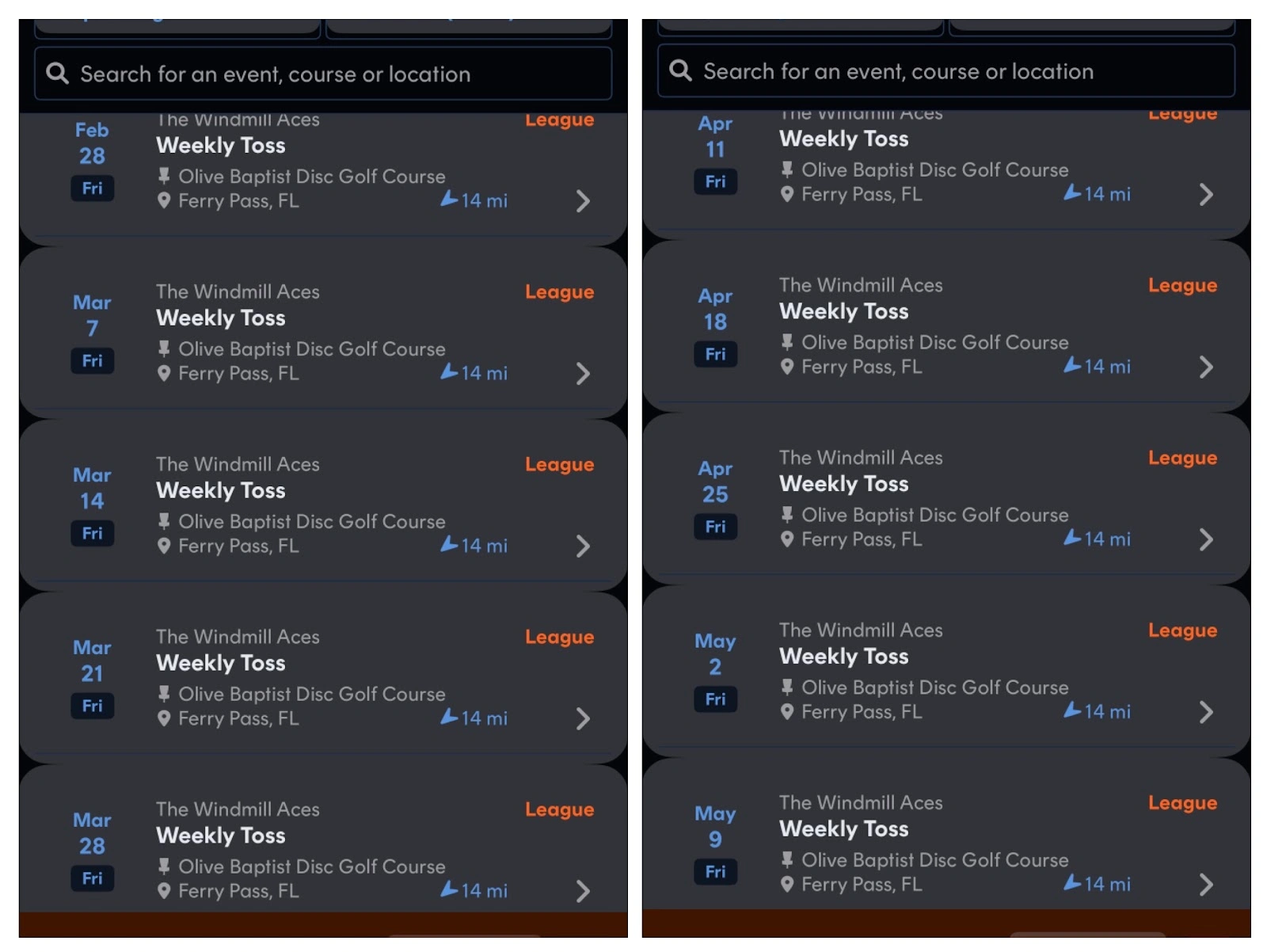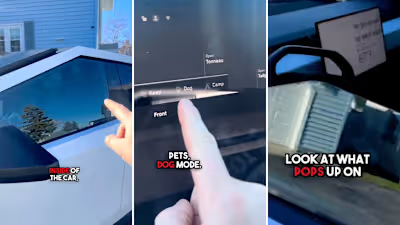Disc Golf Scoring: The Ultimate Guide For Keeping Score In Disc…
Disc Golf Scoring
At first glance, disc golf scoring looks identical to how it’s done in golf. The fewer the strokes, the better. Much of the terminology is a direct match as well, like birdies, eagles, aces, bogeys, etc.
But there are some subtle differences, and if you want your disc golf score to reflect the professional level, it’s worth knowing what they mean. After all, it’s not just a matter of terminology and a UDisc app.
It’s also important to point out the similarities so that the differences morph into starker contrasts—kind of like the difference between a golf ball and a disc.
Table of Contents
Basics of Disc Golf Scoring
In both sports, each hole is defined by a par number, such as par 3, par 4, or par 5. For the individual holes, the number of disc throws it takes to make it from the tee box to the basket is counted against the par number.
For instance, if you are on hole #9 at Blue Angel Disc Golf Course, and it’s a par 3, you want to make it from the tee box to the basket in three shots or fewer.
Disc golf scoring, like golf, is a matter of positives and negatives, with the latter the primary focus, and the former representing a really bad day. If I finish at -3 on my home course, I’m flying high, at least in my personal estimation. Finishing with a +3 is the kind of thing I want to avoid at all costs.
So, back to the par 3. If I have a really good drive, and make it into the basket on the very next shot, then it took two throws on a par 3. That means I scored a -1 on that hole. If my total score was 0 before this particular par 3, I am now at a total score of -1. Make sense?
If the next hole is a par 3 again, and it takes me four throws to make it in the basket, I will be at a +1 for that hole, negating my previous -1 and returning my total score to 0. Negative or positive, each score adds or subtracts until you finish the course—typically after hole #18.
Terminology for Scoring at Each Hole
The mythical, legendary Ace is the preeminent term in disc golf. It may be a more casual term among professionals, who may see a few of them each season, but the rest of us salivate at the mere thought of acing a throw off the tee.
But, there are more terms in disc golf scoring than just an Ace (Hole in One).
Ace (Hole in One): Completing the hole in a single throw. If you’re on a par 4, this will subtract three from your current score.
Albatross (Double Eagle): Completing a hole in three throws under par, like slamming that disc into the chains in only two throws on a par 5.
Eagle: Completing a hole in two throws under par (technically an ace on a par 3, but a two-shot Eagle on a par 4.
Birdie: The bread and butter for most disc golfers—reaching the basket in one throw under par, such as three throws on a par 4.
Par: Match the number of throws from the tee box to the basket with the par number associated with the hole. For instance, taking three throws to go from the tee to the basket on a par 3 is making par.
Bogey: This is where the ugliness begins. A bogey is when you take one more shot than the par for the hole to make it in the basket. For instance, four shots from tee to basket on a par 3 is a bogey.
Double Bogey: Like the bogey, but two shots over par instead of just one.
Triple Bogey: Same thing, but three over par. This is when you start slinging your disc golf bag down the nearest ravine.
Quadruple Bogey: Same thing again, but four over par. At this point, you’re screaming at your discs when you throw them as if they can actually hear and understand you.
Snowman: The number 8 looks like a snowman. If it takes you 8 throws to make it in the basket, you just earned the very unenviable snowman.
Condor: Back to the positive side of things, a Condor is a rare term, representing a run that ends with four under par for that hole. For instance, making an ace on a par 5 is a Condor. If you ever pull that off, hope and pray that someone is around to witness it. The local wildlife doesn’t count.
Types of Scoring Methods

Stroke Play
Each player’s score per hole is recorded, and everything is summed up at the end of the match (generally 18 holes, but can be longer, such as 27 or 9).
As I said above, this is the most common scoring method. If you head to the disc golf course and play with random people 500 times, 495 of those times will revolve around stroke play scoring.
Match Play
This is a disc golf scoring method in which the players compete according to each, individual hole, rather than the sum total of the match. Points are awarded for each hole. For instance, winning the hole grants one point, and tying the hole grants half a point.
Match Play Points
The rules are similar to match play. However, at the end of each hole, players are awarded points based on their margin of victory over the other participants. For the most part, players who use this method apply it in terms of one point for each point of victory. For instance, if Joe finishes a par 4 in two shots, and Susan finishes par, Joe gets two points.
At the end of the match, the points are tallied and a victor is declared.
Team Formats
There are (in general) three team formats, though there are probably some backyard rules out there that disc golfers use (feel free to let us know in the comments!).
Disc golf scoring with four players is usually done via the “Alternate Shot” method. This method includes two teams with two players on each team. The two players on a team alternate shots, with one player teeing off and the other player taking the second shot. So forth and so on.
The “Best Ball” approach is another method of disc golf scoring for teams. In this case, there are no alternating throws. Each player on a two-person team takes a number of shots, just like a regular game. However, at the end of each hole, the player on each team with the least throws from the tee to the basket counts their score.
Last but not least is the “Scramble” method. In this scenario, both players on each team tee off, with the next throw based on the best throw between the two. If Sally’s throw is closer to the basket than John’s, with a more open approach, John and Sally will take Sally’s spot and throw their second.
Callahan
Callhana is a method of disc golf scoring where each player announces their method of choice at the end of each hole. Confusing? You betcha. I wouldn’t play this method but, for some, it’s pretty fun and a good way to shake things up for a day on the course.
Doubles
Doubles is the team setup from above, but it can include any number of even players, four or more. For instance, eight players can break up into four teams of two each, which is “Doubles.”
Odd Man
When you have a fifth wheel dragging along on the course with the rest of your crew, he or she can play alone, taking two throws per basket and choosing the best shot, if that’s how the other doubles are playing.
Tools for Keeping Score
Tools for disc golf scoring are pretty simple. You have three options for each player—a physical scorecard, a smartphone app, or in your head. For the most part, everyone keeps their score in group games, but its also common for one player to use an app to record everyone’s score for each hole.
Smartphone apps are fantastic, but you do have to deal with the fact that one person is keeping score, and they have to be trustworthy. Then there’s the inevitable low battery issue that rears its ugly head from time to time.
Physical scorecards are rare in amateur pick-up games, but more common in local tournaments or Ace Race play.
Advanced Scoring Techniques
I’m using the term “advanced,” but ‘, mostly referring to tournament-level play, whether it’s a professional-level game, league play, etc.
When the sport gets serious, such as tournament level, it’s time to break out the Mandos (mandatory paths), OBs (Out of Bounds), and other, specific rules that disc golfers don’t follow as stringently in recreational play.
At this level, the rules are strictly enforced. For instance, hitting a tree at the speed of sound and sending your disc 30 yards into the woods is not something you can just walk out of, laugh about, and call it a day.
You also have to deal with officials verifying scorecards, cross-verification, electronic scoring systems, and group scorecards that are monitored. OB, Mando, illegal stance, and incorrect disc marking can add strokes or cause disqualification from the game.
Tournament play also includes handicaps, rating systems, divisions, fixed course layouts (or different ones that match divisions), and multiple rounds (in some instances). There might be special formats as well, such as “Best of Three.”
Final Putt
As you can see, there’s more to disc golf scoring than just marking down the number of attempts from tee to basket on each hole. When several players are involved, the fun level usually goes up, though things might get more complicated as well.
At the tournament level and league play, the rules are varied at times, and always strictly enforced. Bring on the pressure! If you’re in any way familiar with golf scoring, you’re already on the right path. All you need to do now is learn the different formats and variabilities in disc golf scoring.
If you have your own scoring system, or you and a group of friends have a particular format you enjoy playing, let us know in the comments! We’re always happy to take on a new challenge or hit the course with a new goal or variation in mind!
Like this project
Posted Jan 9, 2025
Don't miss our disc golf scoring guide, where you'll learn the various ways to play disc golf and how to keep score while you're on the course.
Likes
0
Views
4





